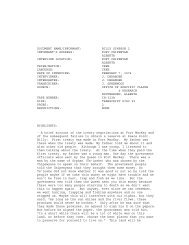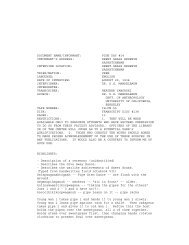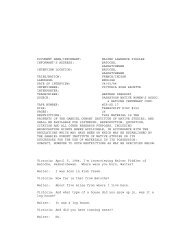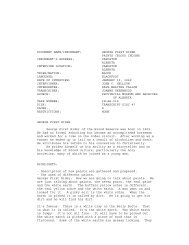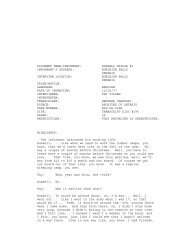Contents of It's not All in Your Head by Asmundson and Taylor
Contents of It's not All in Your Head by Asmundson and Taylor
Contents of It's not All in Your Head by Asmundson and Taylor
You also want an ePaper? Increase the reach of your titles
YUMPU automatically turns print PDFs into web optimized ePapers that Google loves.
up (<strong>Taylor</strong> et al., 2005). BSM may also be especially useful for <strong>in</strong>dividuals with<br />
comorbid disorders that are aggravated <strong>by</strong> stress. More research is needed to determ<strong>in</strong>e if<br />
BSM is as efficacious as CBT <strong>and</strong> to dist<strong>in</strong>guish the cl<strong>in</strong>ically important components that<br />
are common to both therapies.<br />
The efficacy <strong>of</strong> treatments for health anxiety (e.g., psychoeducation, cognitive<br />
therapy, behavioural therapy, ERP, CBT, <strong>and</strong> BSM) has been compared <strong>in</strong> many studies<br />
(e.g., Avia et al., 1996; Bouman & Visser, 1998; Clark et al., 1998; Fava, Gr<strong>and</strong>i,<br />
Rafanelli, Fabbri, & Cazzaro, 2000; Lidbeck, 1997; Speckens et al., 1995; Stern &<br />
Fern<strong>and</strong>ez, 1991; Visser & Bouman, 2001; Warwick et al., 1996). In these studies, effect<br />
sizes <strong>of</strong> treatments were calculated based on participants‘ scores on global measures <strong>of</strong><br />
health anxiety, anxiety, <strong>and</strong> depression (e.g., WI, Beck Anxiety Inventory [BAI], Beck<br />
Depression Inventory [BDI]) <strong>and</strong> have been expressed as Cohen‘s d statistic (1998). A<br />
small effect size or d is 0.20, a medium effect size is 0.50, <strong>and</strong> large effect size is 0.80 or<br />
higher (Cohen, 1988). Most <strong>of</strong> the treatments exam<strong>in</strong>ed were 6 to 21weeks <strong>in</strong> duration<br />
<strong>and</strong> had small sample sizes (6 – 79 participants). In these studies, more participants<br />
tended to drop out <strong>of</strong> the psychosocial treatment groups (2% - 13%) compared to the<br />
control groups (0 %).<br />
Psychosocial treatments (e.g., Avia et al., 1996; Bouman & Visser, 1998; Clark et<br />
al., 1998; Fava et al., 2000; Lidbeck, 1997; Sorensen et al., 2010; Speckens et al., 1995;<br />
Stern & Fern<strong>and</strong>ez, 1991; Visser & Bouman, 2001; Warwick et al., 1996) appear to be<br />
21



